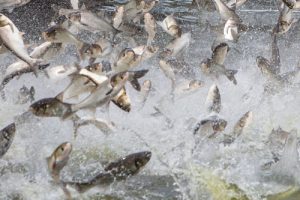The Minnesota Department of Natural Resources (DNR) recently released the updated Invasive Carp Action Plan for the next 10 years of prevention and management efforts in Minnesota.
The plan includes a prioritized set of recommended actions that build upon the DNR’s current intensive invasive carp efforts, including additional actions in the categories of:
- Monitoring invasive carp populations to support response actions
- Prevention and deterrence to limit migration in the state
- Response preparation to ensure swift actions if invasive carp are found in new locations
- Management and control strategies to remove fish and minimize populations
- Outreach, communication and coordination to work with key partners and the public to minimize risk and impacts to the state
The DNR’s update of the plan was informed by engagement with more than a dozen agencies and organizations involved in preventing the spread of invasive carp in the Mississippi River.
Minnesota DNR and partners are already using a wide range of efforts to manage invasive carp, including tagging and tracking invasive carp to better understand and exploit their movements, contracting with commercial fishing operations to target invasive carp, and developing and testing new methods to capture invasive carp.
In addition to continuing and expanding these existing efforts, the updated Action Plan also includes steps to further evaluate potential invasive carp barriers and other deterrents to protect Minnesota.
To date, no evidence of invasive carp reproduction has been observed in Minnesota waters.
Invasive carp have been moving upstream since escaping into the Mississippi River from commercial fish farms in Arkansas in the 1970s.
These fish compete with native species, and silver carp are known to jump out of the water in a way that can pose a risk to boaters.
Individual invasive carp have been caught as far upstream as Pool 2 of the Mississippi River in the Twin Cities metro area (bighead, grass and silver), the King Power Plant on the St. Croix River by Oak Park Heights (bighead and silver), and just downstream of Granite Falls in the Minnesota River (bighead).
State and federal funding sources, including the Environmental and Natural Resources Trust Fund and Outdoor Heritage Fund, have provided key funding for the DNR’s invasive carp detection and response program.
Invasive carp captures in Minnesota must be reported to the DNR immediately by calling 651-587-2781 or emailing invasivecarp.dnr@state.mn.us.
People are asked to take a photo and transport the carp to the nearest DNR fisheries office or make arrangements for it to be picked up by a DNR official. A permit can be requested to keep captured invasive carp for consumption or disposal.
More information about invasive carp is available on the Minnesota DNR website (www.dnr.state.mn.us).
